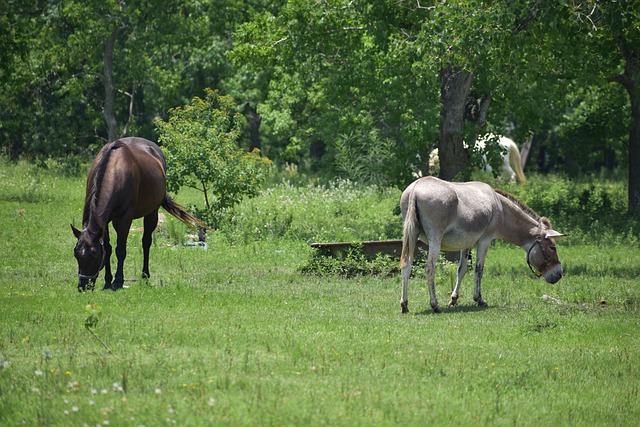Holidays mean family, friends and lots of delicious foods! But don’t leave your dog or cat out of the holiday cheer!
Below are 6 easy homemade holiday treats to share with your
family dog or cat during the holidays.
Sad Puppy Eyes and Incessant Meowing … Oh My!

With holiday cooking, baking and delicious smells, your dog or cat will not be far away from the kitchen! So that means never-ending puppy eyes and kitty meows for treats!
And really, who can blame them?!
Include both Fido and Felix in the holiday season with the six easy recipes below! Homemade, do-it-yourself holiday treats are easy and can be much healthier than commercially made treats.
Homemade treats are also a great option to the many holiday foods and ingredients our pets shouldn’t eat! So instead of feeling guilty this holiday season, be ready to hand out pet-friendly treats made in your own kitchen!
Let’s begin with the dogs!
1. DIY Dog Treats: Dog-Friendly Eggnog!
If you are a fan of eggnog, you may be tempted to share some with your K9 friend. Please do not!
Instead, whip up this dog-friendly eggnog (from Gone to the Snow Dogs) you can safely share with your furry, four-legged best friend!

Dog Eggnog
- 2 small containers of plain yogurt
- 1 jar of baby food (use your dog’s favorite flavor)
- 1/2 cup of water
- 2 eggs
Put all ingredients in a food processor, blender or Magic Bullet and mix until frothy.
Pour into small dishes and top with a dog treat or some healthy blueberries and serve!
Refrigerate any leftovers or pour into ice cube trays or silicone molds for fun frozen treats later.
2. DIY Dog Treats: Turkey & Cranberry Holiday Treats!
This next recipe includes ingredients you probably already have in your kitchen. Posted by Embrace Pet Insurance from the AllRecipes.com website, this recipe makes about 45 holiday treats your dog is sure to love! Cranberries are a healthy, antioxidant-packed fruit and can be enjoyed by your dog in moderation.

Turkey & Cranberry Dog Bones
- 3.5 cups whole-wheat flour
- 1 teaspoon baking powder
- 1 egg
- 1 cup low-sodium chicken broth
- 1 cup shredded cooked turkey
- 1 cup dried cranberries (make sure there are no added raisins or sugar!)
- 1 tablespoon olive oil
Preheat the oven to 350 degrees Fahrenheit. Line baking sheets with parchment paper.
In a large bowl, whisk the flour and baking powder. Stir in the turkey and cranberries. Create a well in the center of this mixture and drop the egg into that well. Add the olive oil and about 1/2 cup of the broth over the egg. Mix until a soft dough forms. If the mixture seems dry, add in – by tablespoons – more of the broth.
Knead the dough on a clean, floured surface for about two minutes. Roll out the dough to 1/4 inch in thickness. Cut the treats out with Christmas cookie cutters and place on the lined baking sheet. Bake the dog treats for 25 minutes until browned. Turn off the oven and allow treats to rest in the oven for 30 more minutes. Remove and cool. Refrigerate treats.
3. DIY Dog Treats: Frozen Pumpkin Treats
Just 3 easy (and healthy!) ingredients, freeze for 12 hours and satisfy those sad puppy eyes! Courtesy of the Spencer the Goldendoodle website!

Frozen Pumpkin Treats
- 1 can 100% pure pumpkin puree (not pumpkin pie filling!)
- 1 cup plain yogurt
- 1/2 cup peanut butter (xylitol-free!)
Blend all 3 ingredients in a bowl with an electric hand mixer until smooth
Pour into ice cube trays or your favorite silicone dog-themed molds!
Freeze for 12 hours, pop them out and serve. Store in the freezer.
Next, let’s whip up some CAT-tastic treats even the most finicky felines won’t be able to resist!
Want a no-bake healthy horse treat for your favorite equine?
Just click here!
1. DIY Cat Treats: Tuna Cat Holiday Treats!
WHAT cat doesn’t meow over tuna?! This easy recipe (from Mess for Less) will have your felines howling for more!
Tuna Cat Treats

- 1 can tuna in oil, drained
- 1 egg
- 1-1/4 cups all-purpose flour
- 1/2 cup water
- Dash of parsley (optional)
- Bottle Cap for cutting out treats
Preheat the oven to 350 degrees F. Line a baking sheet with parchment paper.
Place all ingredients in a food processor and pulse until a dough forms. If the dough is sticky, add a bit more flour. If the dough is too dry, add a tablespoon of water. Roll the dough out to 1/4-inch thickness and cut with a small bottle cap or your favorite cookie cutters.
Place on a baking sheet, bake for 20 minutes until browned. Cool and then store in an airtight container.
2. DIY Cat Treats: Hairball Control Cat Treats!

This recipe from VitaCost.com doubles as a tasty treat as well as a treat that can also help potentially dangerous hairballs effectively move through their digestive system! P.S., you can also add some catnip into the recipe!
Hairball Control Cat Treats
- 1-1/4 cup brown rice flour
- 1/3 cup canned pumpkin (not pumpkin pie mix!)
- 1 brown egg
- 3 tablespoons ground flax
- 3 tablespoons olive oil
- 2 tablespoons water
- 1 tablespoon catnip (optional)
Preheat oven to 350 degrees F. Set a sheet of parchment paper the size of your baking sheet to the side.
In a medium bowl, combine all ingredients; mix thoroughly. Wrap dough in plastic wrap. Let rest 5 minutes.
Unwrap dough; knead a few times. On parchment paper, roll the dough to 1/4” thickness.
Using a pizza cutter, cut narrow strips vertically or horizontally. If the dough starts sticking, wipe off the cutter. Repeat in the opposite direction. When finished, you should have a patchwork grid.
Transfer parchment paper to cookie sheet. Bake 10 minutes.
Remove cookie sheet from oven. Using a spatula or your oven-mitted hands, break up the treats. Spread bits around evenly and return to the oven.
Bake 10 to 15 minutes, or until the edges are golden brown. Remove from oven and let cool. Or, bake for 10 minutes and turn the oven off; leave in oven for several hours or overnight.
These treats will last 4-6 weeks in an airtight container. For a longer shelf-life, refrigerate the treats. They can also be frozen for up to 3 months.
Did you know that hairballs in cats (and even dogs!)
can be limited with regular brushing?
Frequent dog grooming and cat grooming
effectively cuts down on excess hair that can be
licked and then ingested potentially leading to hairballs!
Check out the EquiGroomer Grooming Tools for horses,
dogs, cats and other animals that shed!
3. DIY Cat Treats: Salmon Cat Holiday Treats
If you’re short on time this holiday season, here’s a quick and healthy feline treat recipe (from TheCookieRookie.com) with only 3 ingredients, a quick mix, cutting into treats and just 20 minutes to bake!
Salmon Cat Treats

- 10-ounces canned salmon (undrained)
- 1 egg (beaten)
- 2 cups whole wheat flour
Preheat oven to 350 degrees F.
In a food processor, pulse the canned salmon to chop as finely as possible.
Set a sheet of parchment paper the size of your baking sheet to the side.
In a medium bowl, combine all ingredients; mix thoroughly. Wrap dough in plastic wrap. Let rest 5 minutes.
Combine the chopped salmon, egg and flour in a mixer until it forms a dough.
Roll out ¼-inch thickness on a floured surface and cut into fun shapes. Place on a parchment-lined baking sheet and bake until light brown and crispy; about 20 minutes.
Completely cool before serving and store in an airtight container for up to 2 weeks.

Need a Gift for the Pet Guardian in Your Life?
Give our Cat or Dog Gift Bag!
The EquiGroomer Grooming Tools are modeled after a traditional shedding stone that effectively removes loose hair, dirt and dander from horses, dogs, cats and any other animal that sheds!
Designed to be safe no matter how much or how often you groom your pet, the EquiGroomer will produce a coat that’s shiny, smooth and soft.
























 Grooming your dog involves everything from regular brushing, bathing to nail trims, ear and eyes cleaning, teeth brushing and even hair trimming and anal sac expression with some K9 breeds. Regular grooming not only helps your dog look and feel his best, it is also the perfect time to examine your dog for any potential issues with his coat, skin (like hot spots or lumps), teeth, eyes and ears and /or infections or inflammations.
Grooming your dog involves everything from regular brushing, bathing to nail trims, ear and eyes cleaning, teeth brushing and even hair trimming and anal sac expression with some K9 breeds. Regular grooming not only helps your dog look and feel his best, it is also the perfect time to examine your dog for any potential issues with his coat, skin (like hot spots or lumps), teeth, eyes and ears and /or infections or inflammations. and stronger!
and stronger!


 time to encourage your dog’s comfort.
time to encourage your dog’s comfort.  Our WaterWisk makes bathing your dog so much easier by removing excess soap and water even on bony areas like your dog’s hips and legs!
Our WaterWisk makes bathing your dog so much easier by removing excess soap and water even on bony areas like your dog’s hips and legs!
 Digital thermometers are considered safer and more commonly used today. Temperatures are typically taken via the ear or rectally – which is considered more accurate – in cats, dogs, horses and livestock (with a small amount of lubricant on the end of the thermometer). Be warned, depending on your pet or animal, taking their temperature may be a two-person job!
Digital thermometers are considered safer and more commonly used today. Temperatures are typically taken via the ear or rectally – which is considered more accurate – in cats, dogs, horses and livestock (with a small amount of lubricant on the end of the thermometer). Be warned, depending on your pet or animal, taking their temperature may be a two-person job!

 Yes, our pets are at an even greater risk for dehydration because their bodies contain more water (80%) than the human body which contains only 60% of water so it’s critical to know how to keep your pets well-hydrated during the summer months.
Yes, our pets are at an even greater risk for dehydration because their bodies contain more water (80%) than the human body which contains only 60% of water so it’s critical to know how to keep your pets well-hydrated during the summer months.
 symptoms indicating potential dehydration.
symptoms indicating potential dehydration. quicker and easier and need to be monitored closely.
quicker and easier and need to be monitored closely. Horses are just as susceptible to dehydration. Just a 3-4% loss of body water can cause mild dehydration in a horse.
Horses are just as susceptible to dehydration. Just a 3-4% loss of body water can cause mild dehydration in a horse. often find ourselves worrying about the past or fearful about the future. Neither are natural states of being. Thankfully our pets always live in the moment, so let’s learn mindfulness from our pets!
often find ourselves worrying about the past or fearful about the future. Neither are natural states of being. Thankfully our pets always live in the moment, so let’s learn mindfulness from our pets!
 What would our pets tell us if they could talk? Perhaps that slowing down and being present in this very moment will help us find the mindfulness and peace our hearts and souls crave.
What would our pets tell us if they could talk? Perhaps that slowing down and being present in this very moment will help us find the mindfulness and peace our hearts and souls crave.
 Stay mindful, healthy and positive!
Stay mindful, healthy and positive!

 Homemade Treats for Cats
Homemade Treats for Cats

 lockdown as non-essential businesses. With the arrival of spring and even summer temperatures, many are challenged with effectively grooming their dog’s undercoat and topcoat after the long winter. With more daylight hours and warmer temperatures, shedding dogs are a big issue right now.
lockdown as non-essential businesses. With the arrival of spring and even summer temperatures, many are challenged with effectively grooming their dog’s undercoat and topcoat after the long winter. With more daylight hours and warmer temperatures, shedding dogs are a big issue right now. 
 topcoat (also known as a guard coat) that helps repel water, dust and dirt while also protecting the skin from injury. The guard coat is made up of guard hairs which are coarser in texture (i.e., wire-haired) and are thicker and longer.
topcoat (also known as a guard coat) that helps repel water, dust and dirt while also protecting the skin from injury. The guard coat is made up of guard hairs which are coarser in texture (i.e., wire-haired) and are thicker and longer.
